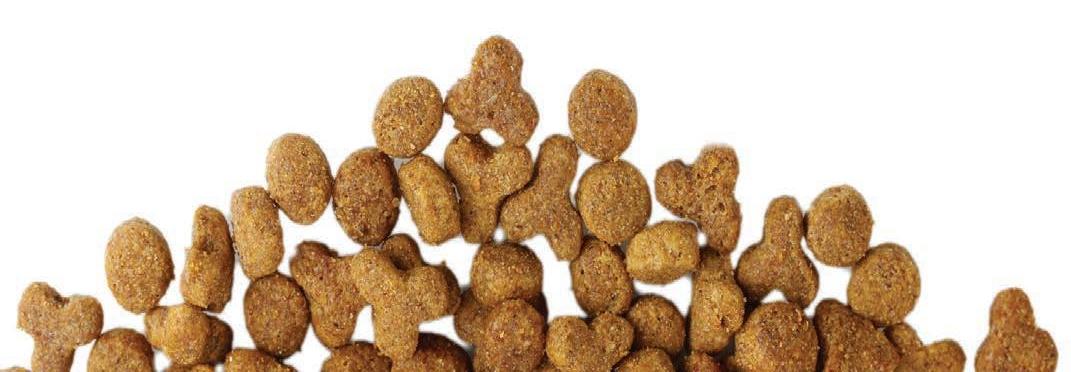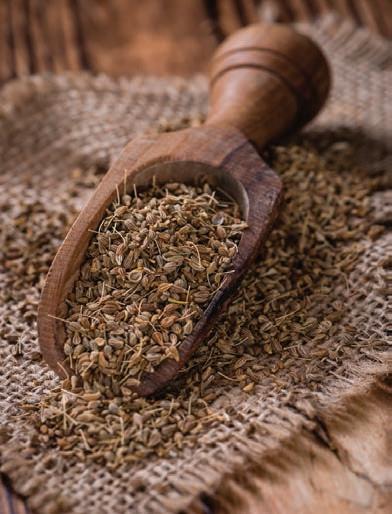
5 minute read
PETS
DON'T LET YOUR DOG
EAT CAT FOOD By Tess Booker
Advertisement
Most pet owners know that it's fairly dangerous to allow your cats or dogs to eat human food. Many things you eat--such as chocolate--are extremely dangerous to your pets and may result in severe damage to their health. However, something less discussed is how dangerous it is to allow your dog to eat cat food. Since they both belong to very different species, their bodies work in different ways. What is healthy for a cat might not be healthy for a dog, and vice versa. If you have both a cat and a dog, you might have noticed that your cat is a very picky eater, while your dog will most likely try to eat everything he finds. Some dogs will even keep this food in their stomachs, even when it's bad for them. While they might not vomit or suffer from diarrhea immediately, in the long term some food might cause lasting damage. One of these foods that will cause suffering for your dog is cat food. Cats are necessarily carnivorous, so their food will contain lots of fat and protein, which might look appetizing for your dog at a first glance. If your dog has a weak stomach, he may suffer from a bad stomachache almost immediately. If he's stronger, you will find out later in his life that his kidneys and liver won't work right because of the high amount of protein found in cat food. The high amount of fat found in this food will cause obesity and pancreatitis.
According to the American Kennel Club, dogs can survive from cat food if there's no other option for them. This happens with strays who will eat whatever they can find to survive. Even if your dog ends up eating cat food one time, you shouldn't have too much to worry about if you take him to a vet you trust. However, the nutrient imbalance won't be healthy for your puppy if you keep it up for too long. Even if you do take him to a vet, sometimes it might end up being too late if you didn't take good care of your dog before. Symptoms of an unhealthy puppy who ate too much cat food might include abdominal pain, lethargy, appetite loss, weakness, constant vomiting and fever.
Some dogs will be stubborn and try to do anything to convince you they prefer cat food. But if you love him, you will know the right thing to do is tell him no and stick with dog food. If your dog shares a home with a cat, make sure he's eating from the right bowl. It might help to keep your cat's bowl somewhere high that your dog can't reach--since cats enjoy being in high places. And don't forget: dog food isn't meant for cats either. Dogs can have a vegetarian supplementary diet, which will reflect on how their food is produced. Cats on the other hand, are strictly carnivorous and need the protein found in meats to survive. According to the animal welfare organization, American Society for the Prevention of Cruelty to Animals, it is not safe or healthy for a cat to be offered dog food constantly.

Why Mindfulness MATTERS

By Caitlyn McKey

Hello fellow fast-paced life goer! How’s that super speedy life going for you right now? Experiencing a bit of burnout? Feeling a little stressed?
How about that brain fog? Do you actually know where your keys are?
Don’t worry my friend, you’re not alone. These are all side effects of the fast-paced modern life we’re all experiencing these days. As a professional using daily mindfulness-based art practices, I’m here to share with you a few small mindfulness practices that you can easily incorporate into your day-today, and the benefits that slowing down more regularly can have in your life. So, what exactly is mindfulness? Jon Kabat-Zinn, an American professor and author of "Mindful," defines it as “the awareness that arises through paying attention on purpose, in the present moment, non-judgmentally, through the service of self-understanding, and wisdom.” Have you ever been reading a book, and in the middle of a sentence remember you need to go grocery shopping? Or maybe you need to take care of the laundry? But then you take mental note of that thought and then go right back to reading. The action of being distracted and then pulling your attention back to the original intentional action, in this case reading, is in its purest form mindfulness. Mindfulness is different from meditation in that it is more of an umbrella term under which meditation fits. What’s great about mindfulness is that you can get the same benefits from a daily meditation practice, but in a shorter amount of time.
SOME SIMPLE MINDFULNESS PRACTICES INCLUDE:
• breathing practices where you do a repeated cycle of breaths, focusing intentionally on the breath itself • mindful eating where you pay full attention with all five senses to the food you’re consuming • mindful walks where similarly to mindful eating you’re again using all five senses while going for a walk for anywhere from 1 minute to an hour in length
Difficult feelings, emotions, and pain are all factors of a human life, however, daily mindfulness practices show that these do not have to rule the ways in which we exist. Studies have shown that a daily mindfulness practice can lower stress, increase our overall sense of calm, increase social emotional skills by deepening our uses of empathy and compassion, aid in managing difficult feelings, reduce brain fog and brain chatter and increase our overall physical health.
If you would like to learn more about the benefits of mindfulness, different mindfulness practices to incorporate into your day, or even more specifically mindfulness-based art practices be sure to check out my website deflatewithcait.com, or you can follow me on Instagram and Facebook @deflatewithcait, where I showcase my program weaving together mindfulness and arts-based practices to highlight the inherent mindful properties of art making.







